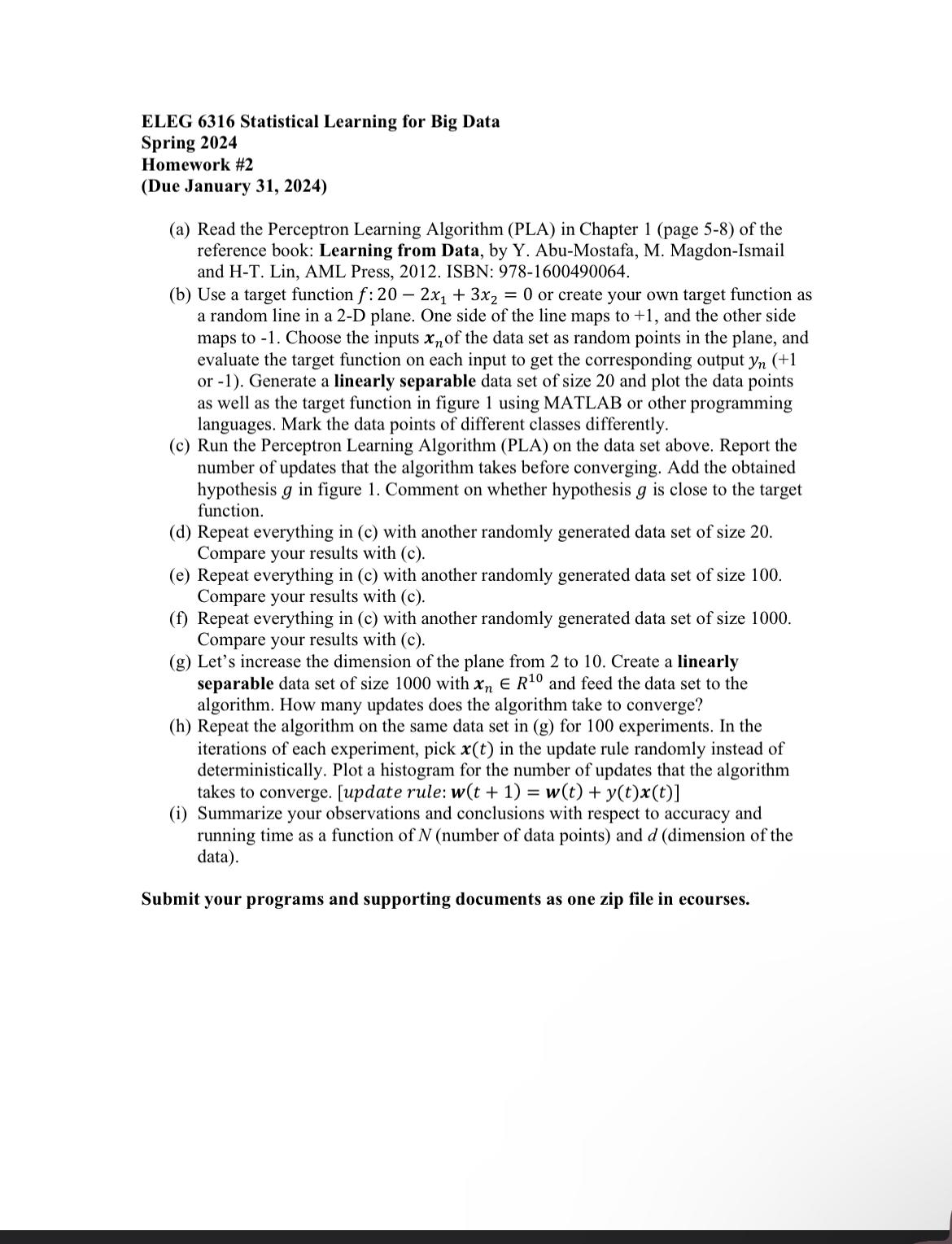Answered step by step
Verified Expert Solution
Question
1 Approved Answer
ELEG 6 3 1 6 Statistical Learning for Big Data Spring 2 0 2 4 Homework # 2 ( Due January 3 1 , 2
ELEG Statistical Learning for Big Data
Spring
Homework #
Due January
a Read the Perceptron Learning Algorithm PLA in Chapter page of the reference book: Learning from Data, by Y AbuMostafa, M MagdonIsmail and HT Lin, AML Press, ISBN:
b Use a target function : or create your own target function as a random line in a D plane. One side of the line maps to and the other side maps to Choose the inputs of the data set as random points in the plane, and evaluate the target function on each input to get the corresponding output or Generate a linearly separable data set of size and plot the data points as well as the target function in figure using MATLAB or other programming languages. Mark the data points of different classes differently.
c Run the Perceptron Learning Algorithm PLA on the data set above. Report the number of updates that the algorithm takes before converging. Add the obtained hypothesis in figure Comment on whether hypothesis is close to the target function.
d Repeat everything in c with another randomly generated data set of size Compare your results with c
e Repeat everything in c with another randomly generated data set of size Compare your results with c
f Repeat everything in c with another randomly generated data set of size Compare your results with c
g Let's increase the dimension of the plane from to Create a linearly separable data set of size with and feed the data set to the algorithm. How many updates does the algorithm take to converge?
h Repeat the algorithm on the same data set in g for experiments. In the iterations of each experiment, pick in the update rule randomly instead of deterministically. Plot a histogram for the number of updates that the algorithm takes to converge. update rule:
i Summarize your observations and conclusions with respect to accuracy and running time as a function of number of data points and dimension of the data
Submit your programs and supporting documents as one zip file in ecourses.

Step by Step Solution
There are 3 Steps involved in it
Step: 1

Get Instant Access to Expert-Tailored Solutions
See step-by-step solutions with expert insights and AI powered tools for academic success
Step: 2

Step: 3

Ace Your Homework with AI
Get the answers you need in no time with our AI-driven, step-by-step assistance
Get Started


